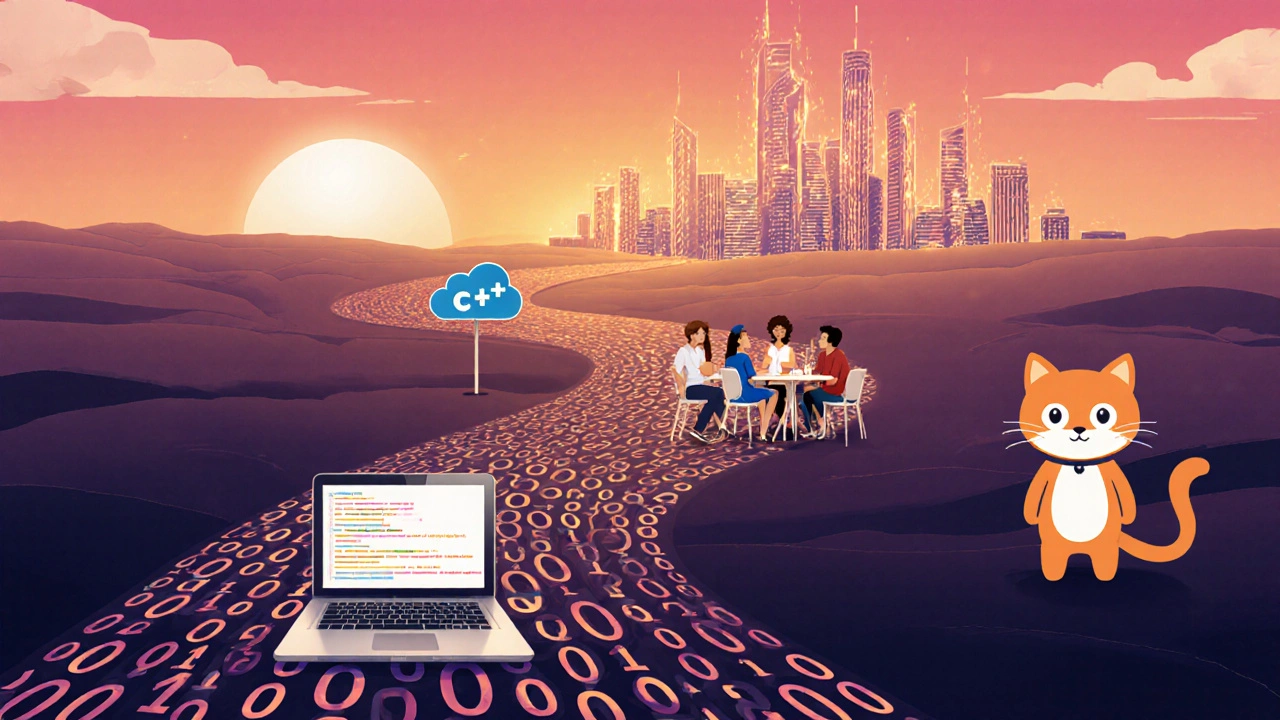Why Coding Skills Unlock Tech Innovations - 2025 Guide

Tech Innovation Skill Mapper
Find Your Innovation Path
Select your current skill level and areas of interest to get personalized learning recommendations based on the latest tech innovation trends.
When you hear the phrase coding skills the ability to write, read, and understand computer code that powers everything from apps to AI models, you might picture a lone programmer in a dark room. In reality, those skills are the passport to every breakthrough we see today - from smart homes to self‑driving cars. This guide breaks down why coding skills matter, which abilities map to the hottest tech fields, and how you can start building a future‑proof toolkit right now.
1. Coding as the Engine of Modern Innovation
Every major tech wave - the cloud, mobile, AI, and now the metaverse - started with someone who could turn an idea into executable code. Take Artificial Intelligence systems that learn from data and make decisions as an example: without the underlying algorithms written in Python or Java, the AI services powering chatbots, recommendation engines, and medical diagnostics would remain theoretical.
Similarly, the rise of the Internet of Things networks of connected devices that collect and exchange data hinges on embedded code that runs on micro‑controllers. In each case, those who can write and adapt code become the architects of change.
2. Core Coding Skill Sets Every Innovator Needs
- Logical problem‑solving: Breaking down complex requirements into step‑by‑step instructions is the foundation of all programming.
- Algorithmic thinking: Understanding sorting, searching, and optimization patterns lets you craft efficient solutions.
- Language fluency: While you don’t need to master every language, being comfortable with at least one high‑level language (Python, JavaScript, or Java) opens most doors.
- Version control: Using Git (often via GitHub a platform for hosting and collaborating on code repositories) ensures your work is reproducible and collaborative.
- API integration: Knowing how to consume and expose RESTful or GraphQL services lets your code talk to other systems.
These five pillars form a portable skill set that you can apply whether you’re building a blockchain ledger or a VR game.
3. Mapping Skills to Emerging Tech Domains
Below is a quick matrix that shows which coding competencies line up with specific innovation areas. Use it to spot gaps in your own toolkit.
| Innovation Domain | Key Coding Skills | Typical Languages/Tools |
|---|---|---|
| Artificial Intelligence | Algorithmic thinking, data manipulation, model deployment | Python, TensorFlow, PyTorch |
| Internet of Things | Embedded programming, hardware interfacing, networking | C, MicroPython, MQTT |
| Blockchain & Decentralized Apps | Security‑focused coding, consensus algorithms | Solidity, Rust, Go |
| Quantum Computing | Linear algebra, quantum algorithm design | Qiskit (Python), Cirq |
| Augmented & Virtual Reality | Graphics pipelines, real‑time performance tuning | C#, Unity, Unreal Engine |
4. Learning Pathways That Actually Work
There’s no shortage of resources, but quality matters. Here’s a step‑by‑step roadmap you can follow in 2025:
- Pick a language that matches your goal. For AI, start with Python; for embedded work, try C or MicroPython.
- Complete a guided project. Websites like freeCodeCamp, Coursera, and Udacity offer project‑based tracks that end with a portfolio piece.
- Join a community. Contribute to open‑source publicly available software that anyone can inspect, modify, and enhance projects on GitHub. Real‑world feedback accelerates learning.
- Earn a certification. Vendor‑agnostic certificates such as the Google Cloud Professional Data Engineer or the AWS Certified Machine Learning - Specialty signal credibility.
- Iterate. Re‑visit previous projects, refactor code using newer libraries, and document lessons learned.
Following this loop keeps you moving from beginner to contributor in under a year, provided you allocate consistent weekly time.
5. Future‑Proofing Your Toolkit
Tech moves fast, but certain habits keep your skill set relevant:
- Read the docs. Official language and framework documentation updates first.
- Experiment with new APIs. Services like OpenAI’s GPT‑4.5 or Azure’s AI Studio reveal emerging patterns.
- Learn the fundamentals of cloud-native development. Containers (Docker), orchestration (Kubernetes), and CI/CD pipelines become universal.
- Stay on the edge of hardware trends. Understanding ARM architecture, edge‑computing constraints, and quantum simulators expands your horizon.
By treating learning as a habit rather than a one‑off event, you’ll stay ahead of the curve.

6. Quick Start Checklist
- Identify the innovation domain you’re most excited about.
- Select the primary language (Python, JavaScript, Rust, etc.).
- Enroll in a project‑based course that delivers a portfolio piece.
- Create a GitHub repo, push code weekly, and ask for reviews.
- Read at least one official doc page per week for your chosen tools.
- Attend a local or virtual meetup every month.
Tick these boxes and you’ll have a solid pathway from curiosity to competency.
Frequently Asked Questions
Do I need a computer science degree to learn coding?
No. Many successful developers are self‑taught. Focus on projects, practice, and community feedback instead of formal credentials.
Which language should I start with for AI?
Python is the de‑facto choice because of its extensive libraries (NumPy, pandas, TensorFlow, PyTorch) and beginner‑friendly syntax.
How much time per week is realistic for skill growth?
Aim for 5-10 hours. Consistency beats marathon sessions; short daily coding sprints build muscle memory.
What’s the best way to showcase my coding projects?
Create a clean GitHub profile, write concise README files, and host live demos using Netlify or Vercel. Link these in a personal portfolio site.
Will low‑code platforms replace traditional coding?
Low‑code tools speed up simple apps, but complex, scalable innovations still require deep coding knowledge.